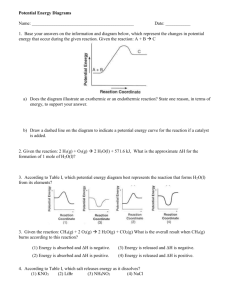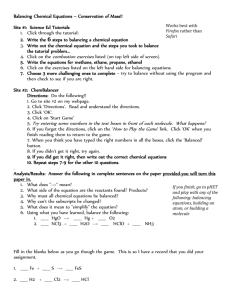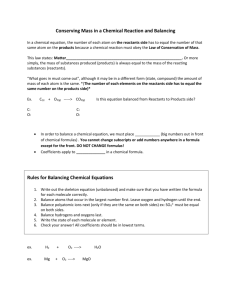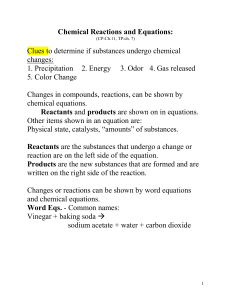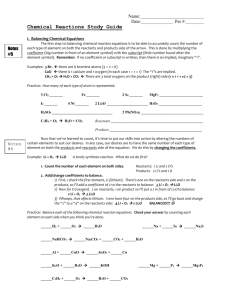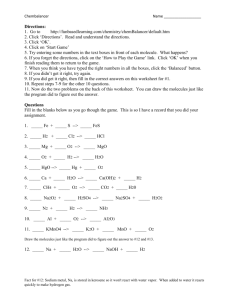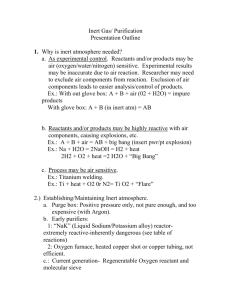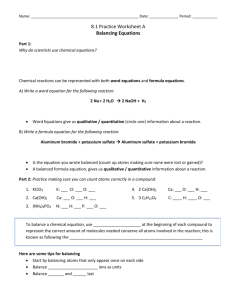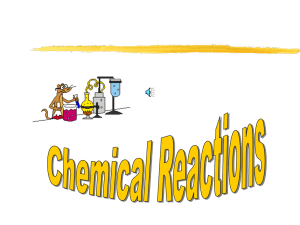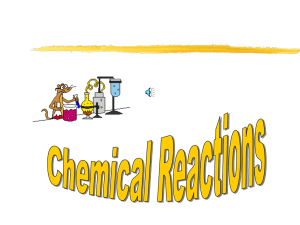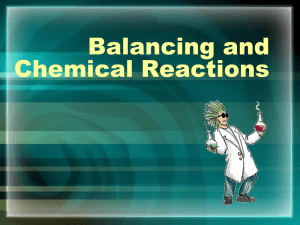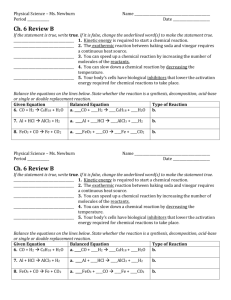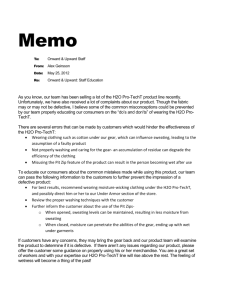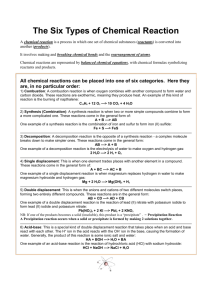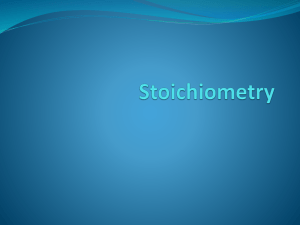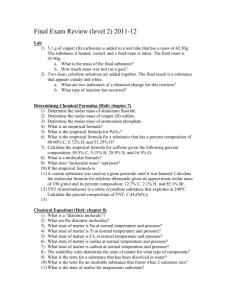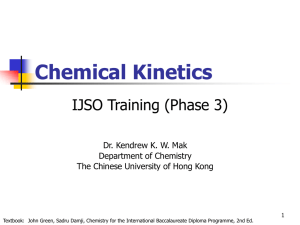WORD AND FORMULA EQUATIONS
advertisement
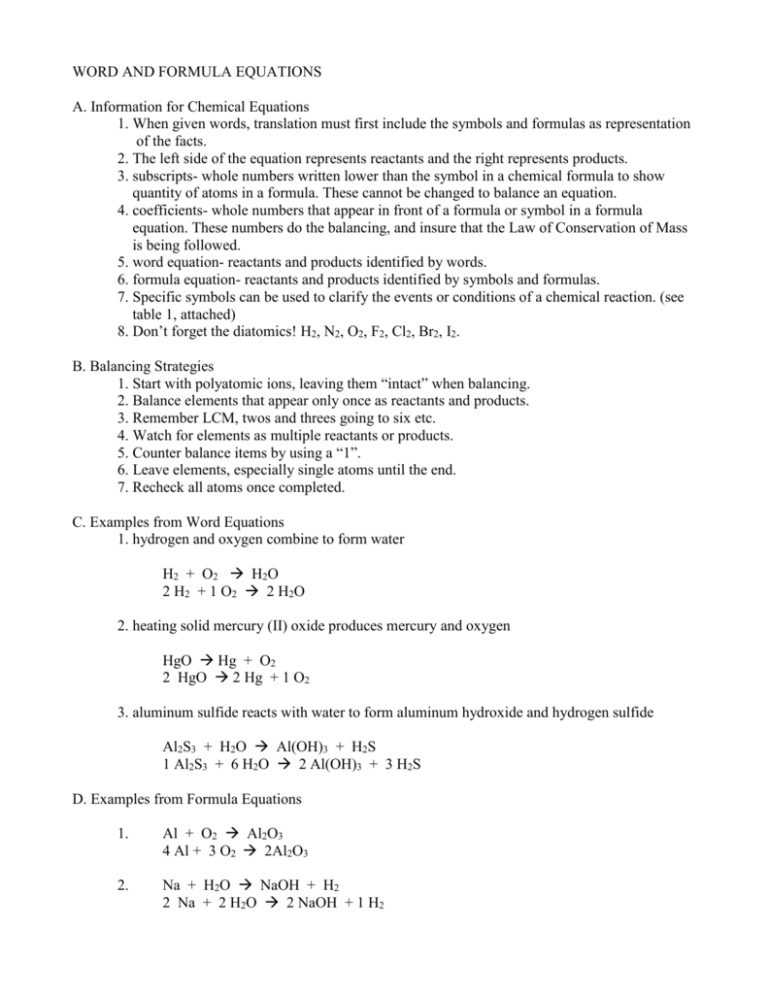
WORD AND FORMULA EQUATIONS A. Information for Chemical Equations 1. When given words, translation must first include the symbols and formulas as representation of the facts. 2. The left side of the equation represents reactants and the right represents products. 3. subscripts- whole numbers written lower than the symbol in a chemical formula to show quantity of atoms in a formula. These cannot be changed to balance an equation. 4. coefficients- whole numbers that appear in front of a formula or symbol in a formula equation. These numbers do the balancing, and insure that the Law of Conservation of Mass is being followed. 5. word equation- reactants and products identified by words. 6. formula equation- reactants and products identified by symbols and formulas. 7. Specific symbols can be used to clarify the events or conditions of a chemical reaction. (see table 1, attached) 8. Don’t forget the diatomics! H2, N2, O2, F2, Cl2, Br2, I2. B. Balancing Strategies 1. Start with polyatomic ions, leaving them “intact” when balancing. 2. Balance elements that appear only once as reactants and products. 3. Remember LCM, twos and threes going to six etc. 4. Watch for elements as multiple reactants or products. 5. Counter balance items by using a “1”. 6. Leave elements, especially single atoms until the end. 7. Recheck all atoms once completed. C. Examples from Word Equations 1. hydrogen and oxygen combine to form water H2 + O2 H2O 2 H2 + 1 O2 2 H2O 2. heating solid mercury (II) oxide produces mercury and oxygen HgO Hg + O2 2 HgO 2 Hg + 1 O2 3. aluminum sulfide reacts with water to form aluminum hydroxide and hydrogen sulfide Al2S3 + H2O Al(OH)3 + H2S 1 Al2S3 + 6 H2O 2 Al(OH)3 + 3 H2S D. Examples from Formula Equations 1. Al + O2 Al2O3 4 Al + 3 O2 2Al2O3 2. Na + H2O NaOH + H2 2 Na + 2 H2O 2 NaOH + 1 H2 3. K3PO4 + MgCl2 Mg3(PO4)2 + KCl 2 K3PO4 + 3 MgCl2 1 Mg3(PO4)2 + 6 KCl 4. 1 CO2 + 1 H2O 1 H2CO3 5. CH4 + O2 CO2 + H2O 1 CH4 + 2 O2 1 CO2 + 2 H2O Additional Practice: 1. iron (III) hydroxide breaks down into iron (III) oxide and water 2. SiO2 + HF H2O + SiF4 3. C3H8 + O2 CO2 + H2O Table 1. Symbols used in chemical equations Symbol Explanation “yields”; indicates result of reaction. Used in place of a single arrow to indicate a reversible reaction. (s) A reactant or product in the solid state; also used to indicate a precipitate. Alternative to (s), but used only to indicate a precipitate. (l) A reactant or product in the liquid state. (aq) A reactant or product in an aqueous solution (dissolved in water). (g) A reactant or product in the gas state. Alternative to (g), but used only to indicate a gaseous product formed. heat or 2 atm Pressure Reactants are heated. Pressure at which reaction is carried out, in this case 2 atm. Pressure at which reaction is carried out exceeds normal atmospheric pressure. 0 C Temperature at which reaction is carried out, in this case 0C. Pt Formula of catalyst, in this case Platinum, used to alter the rate of the reaction.
